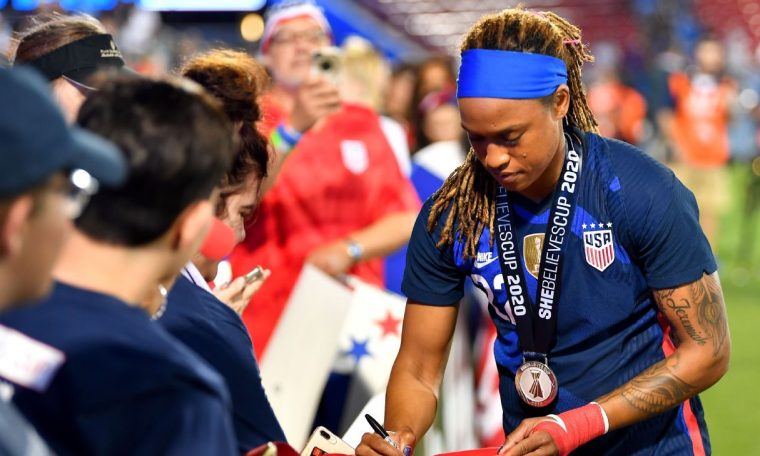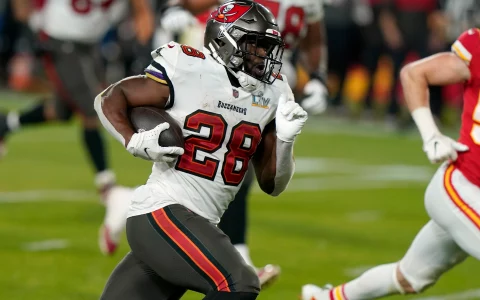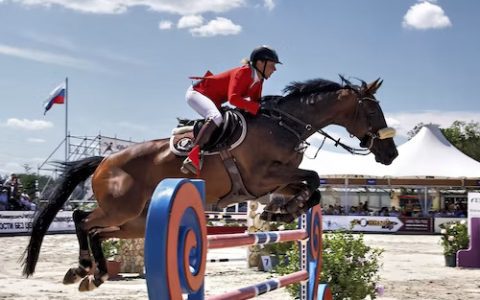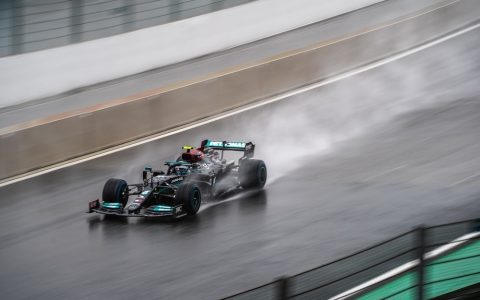
For weeks now, the protests surrounding the death of George Floyd while in Minneapolis police custody have been taking place all over the world. And the actions of the protesters have sparked long-overdue conversations about racial inequality and police brutality.
Soccer is taking part in that dialogue. Players such as Columbus Crew forward Derrick Etienne, North Carolina Courage/U.S. women’s national team forward Jessica McDonald and Portland Timbers forward Jeremy Ebobisse have shared their experiences with systemic racism, providing an invaluable perspective. Their stories, along with those of countless others, have done their part to add momentum, as have the charitable efforts of individual players such as Fortuna Dusseldorf and U.S. men’s national team goalkeeper Zack Steffen.
“The fire is lit right now. It’s just a matter of how we’re going to continue keeping this fire lit,” McDonald said. “And it starts with conversations. And it starts with support for one another, just humanity in general.”
On Friday, that support manifested itself in the formation of the Black Players Coalition of MLS. The organization is comprised of over 70 black MLS players who have banded together to fight racism in the U.S. and Canada, with the aim of gaining more black representation while also finding ways to impact black communities.
“One of the central focuses is elevating our voices as a player pool and creating a sustainable path, sustainable organization that can create change and that’s going to outlive all of our careers and be passed down to the next generation so that they can continue these efforts,” said Ebobisse on a video conference with reporters.
Sensing the magnitude of the moment, teams, leagues and governing bodies have shared no shortage of statements decrying the status quo and insisting that more needs to be done to fix the racial inequities that exist. Yet there is almost something easy about making a statement, and one hopes that there will be substance behind the sentiment.
The United States has been in this situation before. The fatal shooting of Michael Brown in Ferguson, Missouri, at the hands of police in 2014 sparked protests that eventually faded from the consciousness of the broader public. Given the multiracial aspect of the protests, as well as the breadth of organizations showing support, there is hope that this time is different. But there also is wariness.
“Statements are great. People weren’t making statements like that before,” said Ed Foster-Simeon, the president and CEO of the U.S. Soccer Foundation, which through soccer helps fund and develop youth programs in underserved communities. “But what I hope in my heart of hearts is that people are committed to go beyond statements and to make deeper, more lasting change, to do what they can to address the problems that the nation is facing right now.”
1:36
Portland’s Jeremy Ebobisse says conversations need to happen to “fix the system that lets black people down every day.”
It can be argued that the sport of soccer could be uniquely positioned to have an impact. Its popularity crosses racial, gender and socioeconomic lines across the world, and yet, in America, too often the sport has fallen woefully short of its potential. Racist and homophobic chants can still be heard in stadiums throughout the world. In the U.S., organized soccer is still largely viewed as a white, suburban sport, especially as it relates to the game’s power brokers. The U.S. Soccer Federation board of directors does not have a single black person in its ranks, though it has improved in terms of representation by women, using independent director positions to increase gender diversity. The pay-to-play system that predominates in youth soccer also serves to shut out too many underserved children because of the cost of participation.
Those realities, combined with the movement inspired by Black Lives Matter, create an opportunity for the sport of soccer to have an impact on reducing systemic racism within the sport’s ecosystem. It is by no means a tap-in, and there is a sense that this is an all-or-nothing moment.
“If we don’t create lasting change now, I don’t think I’ll ever experience it in my lifetime,” said Toronto FC general manager Ali Curtis, who is one of two black GMs in Major League Soccer. “Because what’s been happening, and what happened on May 25, it needs to stop. It’s just painful. If we don’t create a plan and then execute, it’s nothing new. Nothing will ever change.”
Some initial steps have been taken. MLS has created a platform on the league’s website for players to speak about their experiences.
“I wanted to make sure that it was real,” Portland Timbers defender Chris Duvall said. “And their response to me was, ‘Yep, of course. That’s exactly what we want.’ That connection, it said a lot. They weren’t concerned with how it would affect their image. They weren’t concerned about what was gonna come out of my mouth. They just want to make sure that my voice was heard.”
It was also telling that the Bundesliga — with the backing of FIFA — didn’t penalize players such as Schalke’s Weston McKennie and Borussia Dortmund’s Jadon Sancho, who either wore armbands or displayed T-shirts in support of the protests. The game’s laws state that “any political, religious or personal slogans, statements or images” on equipment is forbidden. Last week, the U.S. Soccer Federation repealed a policy requiring players to stand for the national anthem, acknowledging for the first time that the gesture was not an attack on the flag but rather a way of protesting racism and police brutality.
“We’re kind of in a triage moment,” said Brenda Elsey, an associate professor of history at Hofstra University who also is the lead development officer in the Americas for the Fare Network, an organization that seeks to combat inequality and bigotry in soccer. “[Not sanctioning players], that’s the first step. It’s very important that players feel safe and supported. The next step is pressure for structural change in terms of a more diverse staff at the coaching level, the federation level, the governance level.”
That will depend on the willingness of those who control the levers of power to loosen their grip, a much more complicated endeavor than simply professing public support. People outside the power structure need to apply pressure even to organizations that outwardly have taken steps to foster more inclusion and diversity. In its most recent racial gender report card from The Institute for Diversity and Ethics in Sport (TIDES) at the University of Central Florida, MLS received an A-grade in racial hiring and a B overall. Curtis feels it’s necessary to look deeper.
“It depends on how you define things. A savvy accountant can make it seem positive,” Curtis said of the league’s grade on diversity. “MLS hasn’t done well when it comes to the hiring of black coaches, black executives. There’s a lot of work that needs to be done. Our league needs to look at ourselves in the mirror with integrity. We need to do something more. We need to act.”
1:10
Shaka Hislop is “proud” of Marcus Rashford for challenging the UK government to extend its free school meal program.
Curtis acknowledges that over time, MLS has become more diverse. During the 2019 season, nearly 62% of players identified as Latino, African American, Asian American or other — an increase from nearly 54% in 2017. But, in addition to being one of two black GMs in the league, Curtis points out that there are just two black head coaches — the Colorado Rapids’ Robin Fraser and the Montreal Impact’s Thierry Henry — in the 26-team league. There has never been a black team president in the league’s history, dating back to 1996.
In an exclusive interview with ESPN, MLS commissioner Don Garber acknowledged that the league needs to do more to minimize racism. He also said that discussions are underway to address inequity. Last week, he held a conference call with black players and executives, a group that included Curtis. Garber said the league will begin to formulate programs to that end, both within the league and at the youth level.
“That’s going to include financially supporting organizations that could make a difference in our society,” Garber said. “It will include us digging into the inequities and the overall inequality within the sport of soccer, starting at the youth level and then all the way up through the professionals, and assuring that we are providing equal opportunity at all levels. Today [MLS] is a diverse group, but it is not a group that includes a black person at the executive vice president level or above.”
Curtis isn’t waiting around for the league to come up with a plan. The Toronto GM recently held conference calls with some chief soccer officers from around the league to solicit ideas and discuss what they can do. And Curtis is in the process of putting together his own plan by which the league could implement a host of programs that are both league- and community-based. These include using players and staff to engage in voter education and greater investment in education in underserved communities.
“When you don’t have the books and you don’t have the pencils and you don’t have the computers and all these types of things, the divide gets even wider,” Curtis said. “We really need to attack that.”
Curtis said he also plans to change how black people are underrepresented in MLS leadership, both on the technical and business side.
“We need to impact rules and guidelines and minimum standards that measure diversity, that measure inclusiveness, all these types of things,” he said. “We need to create programming that achieves that.”
Addressing the imbalance at soccer’s top levels
1:42
USWNT defender Crystal Dunn says labels are placed on black athletes before they even take the field.
The USSF is another organization that has work to do. All told, there are four women and three Latino men on the 14-member board of directors, which governs the affairs of the USSF in between meetings of the national council. The rest are white men. The USSF’s ability to directly influence the makeup of the board is limited to just three independent directors. The rest are either elected by the national council (the voting membership of the USSF) or the USSF’s constituent organizations, such as the U.S. Adult Soccer Association.
The same goes for the national council, but anyone who has ever attended a USSF Annual General Meeting will notice that the makeup of the national council is overwhelmingly white.
USSF president Cindy Parlow Cone wasn’t made available to ESPN for an interview for this story, but in remarks she made during Saturday’s board of directors meeting, she said repealing the anthem policy was “just the first step” and that fighting discrimination and racism “is not about short-term initiatives. This is about writing these ideals into our DNA so they are informing every decision we make moving forward.”
The work of the USSF Diversity Task Force, whose responsibility in part was to ensure diversity in hiring, was sidelined for a time after Tonya Wallach, chief talent and inclusion officer, was let go in April amid a 50-person reduction in staff. A U.S. Soccer spokesperson told ESPN that the task force would be replaced by a board-level committee and that an internal working group will develop plans for hiring more diverse candidates.
The National Women’s Soccer League finds itself in a decidedly different space from that of MLS. The NWSL is now in its eighth season, commissioner Lisa Baird has been on the job all of 3½ months, and with just a 15-person staff at league level, resources are stretched thin. As the first American team sports league to be back amid the coronavirus pandemic — its upcoming tournament in Utah kicks off on June 27 — pulling that off in a safe manner is where the league’s focus lies at the moment.
And yet one can’t help but notice that the NWSL’s head-coaching ranks are predominantly white and male. Sky Blue FC’s Freya Coombe is the league’s only woman manager among nine teams.
Baird is aware of that fact and the significance of this moment in society. She told ESPN that as a new commissioner, her focus has been on listening to the players, and she said the league plans to partner with its players’ union to promote social justice causes. When the league’s hiring freeze eases, that is when the NWSL will begin to focus on growth and hiring practices.
“Diversity is going to be a No. 1 principle for us for sure,” Baird said. “It needs to be in America today.”
Any attempt to minimize racism and discrimination can’t be just a top-down effort. As much as MLS touts its free-to-play academies, there must be greater efforts to create more access to the game at the grassroots level. That means finding ways to mitigate the pay-to-play system in the U.S., which involves parents shelling out thousands of dollars per year so their children can participate, a structure that effectively shuts out kids from historically underrepresented communities. The USSF has a scholarship fund for players around the country, but it goes only so far. For the 2018-19 season, the amount of scholarships totaled just under $830,000.
“The pay-to-play system in the United States makes U.S. soccer particularly racially unjust because of the socioeconomics,” said Elsey, the history professor.
Andrew So is the executive director of South Bronx United, a youth club that provides not only playing opportunities for children but a slew of academic, leadership and family support programs, as well. He feels acutely just how much demand there is for the kind of programs SBU provides.
“We can only serve a subset of the youth and families that we know would love to participate in a program,” he said. “So more investment in getting programs into those communities that are lower or no cost to families is really important.”
As for pay-to-play, So said, “I think that’s something that that MLS and U.S. Soccer need to look at, to continue to look beyond just thinking of their academies as the solution, because there’s so many communities that won’t get reached.”
1:48
USWNT’s Christen Press explains how the global protests are helping the fight for equality.
All of this costs money, of course, and every entity has limits on financial resources. And various teams and leagues in the U.S. and Canada have engaged in a variety of charitable works, including MLS through MLS Works.
For Foster-Simeon of the U.S. Soccer Foundation, the key is investing in infrastructure and programs in communities and existing institutions such as parks and recreation departments. That way the contributions are sustainable as opposed to just parachuting in.
“If you can build support and infrastructure in underserved communities, and create access right where kids live, then you begin to change the dynamic,” he said.
So can the broader community take the momentum of the protests and translate that into change? Foster-Simeon feels that it will take time for organizations to home in on the best way to fix racial inequality.
“I think they will last, because I think every one of those organizations is sensitive to the fact that they don’t want to be in the position of mouthing empty words and not following through,” he said.
And yet there is a sense of urgency, as well.
“We just cannot be afraid to fail in this moment, you can’t be afraid to not know exactly what to say, and therefore you don’t have the conversation,” Curtis said. “We have to open up and we have to communicate. There’s going to be times that we’re going to invest in a program and it’s going to be a failure. It’s going to be, ‘What were we thinking? We should have done something different.’ And that’s fine. As long as it comes from a place of trying to do right, we will finish the marathon in the right way.”
There are many miles to go.



